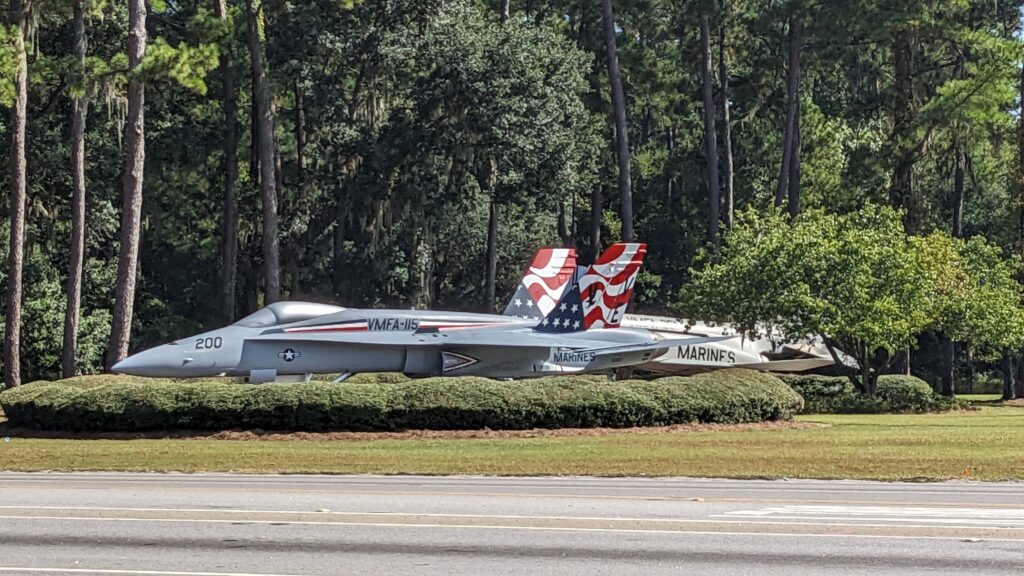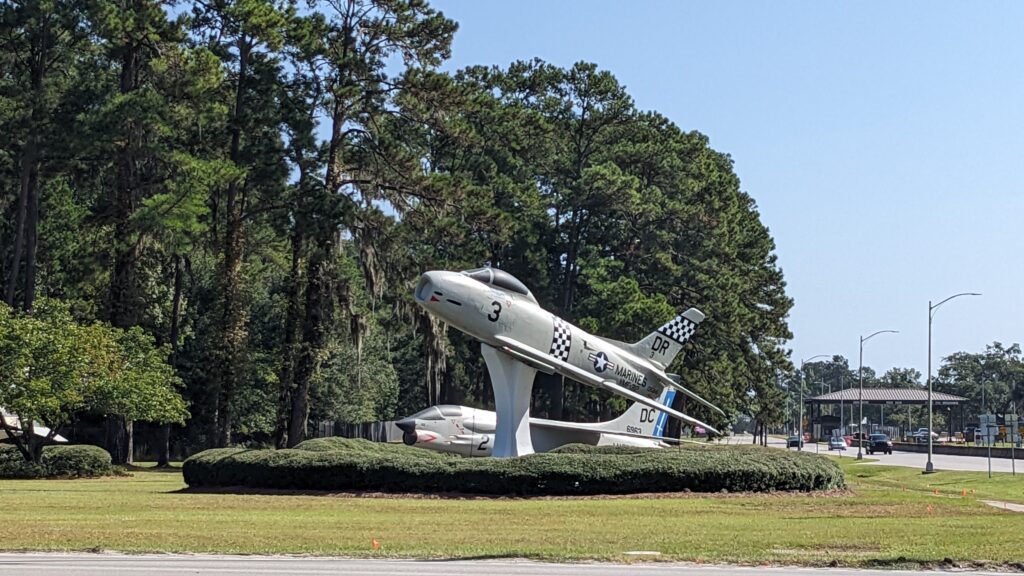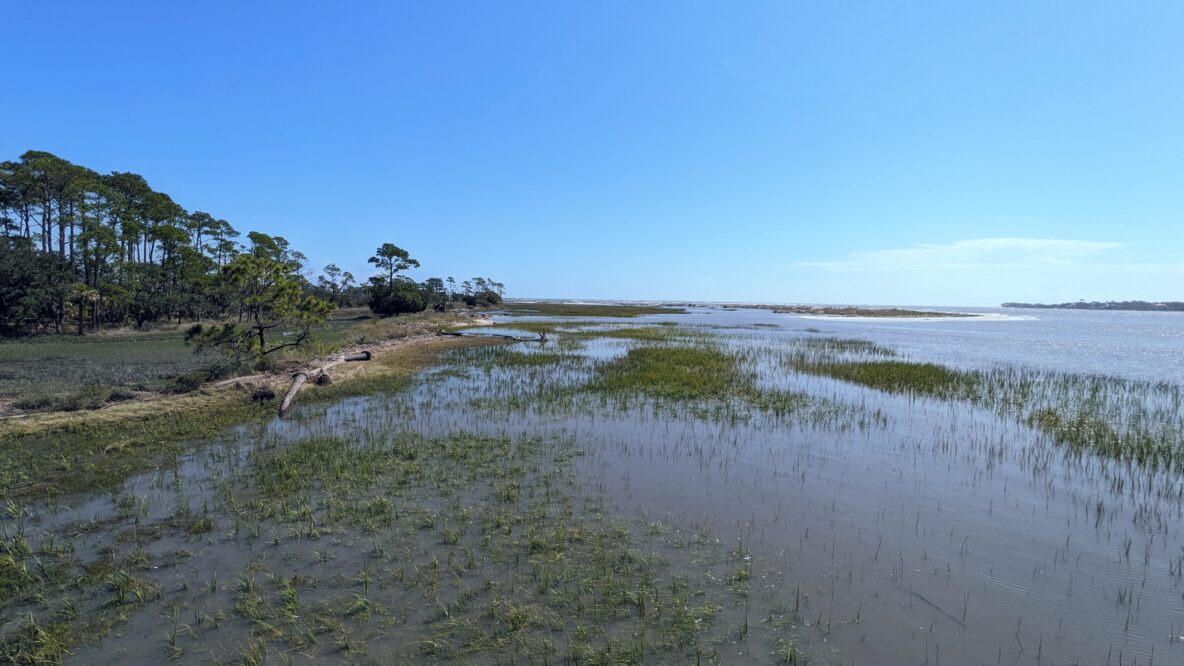Technically the LowCountry is “a geographic and cultural region along South Carolina’s coast, including the Sea Islands.” However, for the purposes of our blog we are including Savannah, Georgia in this post – since we were only there for a day and because it is literally on the South Carolina border – the border between the two states being the Savannah River.
It was an hour’s drive from Brunswick to Savannah, so we arrived in the city early in the day, and parked the minivan at the lot where one of the hop-on/hop-off trolleys departs. There are a lot of companies running these trolleys, and they all had a lot of them on the streets. If it is this busy on a Tuesday in early October, I can’t imagine what it must be like at the height of tourist season.
We took the trolley most of the way around the 90-minute loop getting to know a lot about the history of the city and about the life history of our driver and several generations of his family. There were about a half dozen people that he shouted out to who were walking along (including one man who was in a funeral party in front of one of the churches). He definitely was a life-long Savannahian – who was a little put out that what had been Calhoun Square (named for John C. Calhoun) had been renamed (and he couldn’t remember who it was named for now, but was pretty sure that the name would be restored). We got off in the riverfront district and began our walking tour back past much of what we had driven by.

This is one of the cuts that were made along the waterfront in the 1840’s so that cotton could be moved from trains to the ships along the wharves. Prior to that cotton came on barges so it was already on the wharf. Savannah is still a huge port city (the 4th largest port in the US and the second largest on the East Coast – we were paying attention to our tour guide).
We retraced our way back into the historic district. The conceit of our trolley company is that Savannah-related re-enactors board the trolley at different locations and give some of their personal history. One was Juliette Gordon Lowe, the founder of the Girl Scouts. We also stopped in the garden of her home.
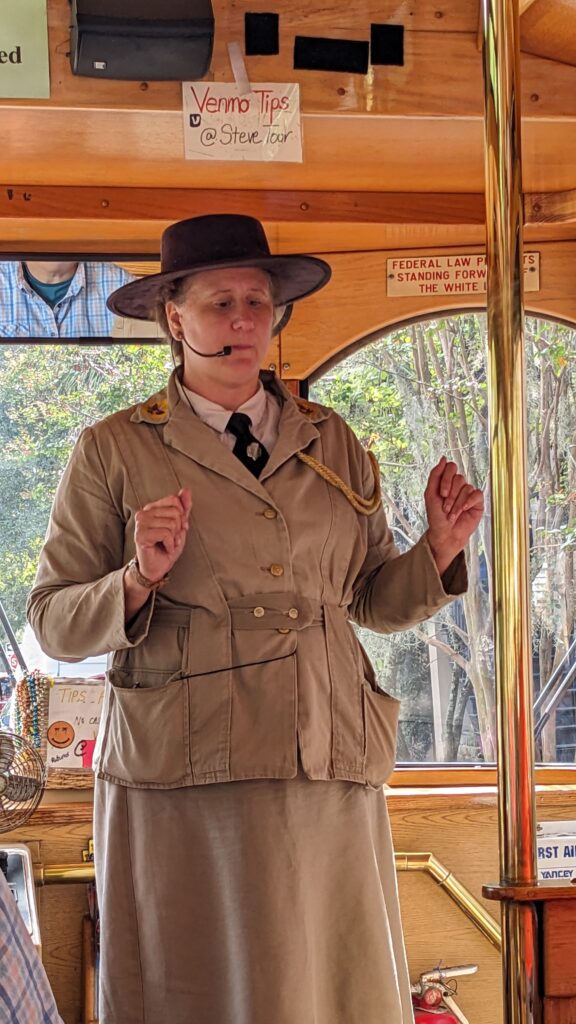


The most iconic image of Savannah is the fountain in Forsyth Park.
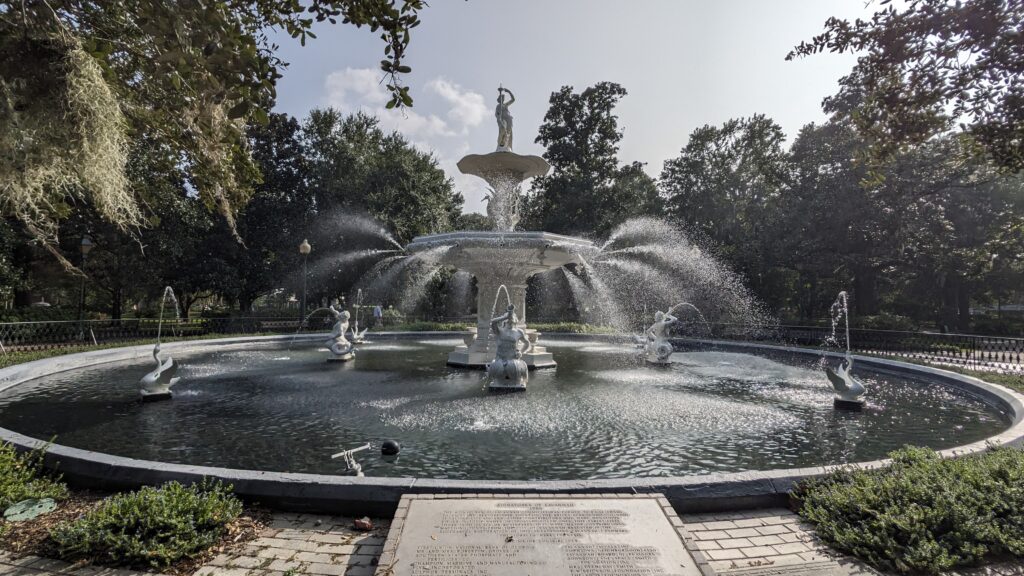
The park is very large with many live oak trees covered in Spanish moss, with a very large playground, an outdoor stage and many paths that were filled with walkers and bikers. We got a coffee at a shop at one end of the park and enjoyed some people-watching. There are a lot of young people in the city – several colleges including the Savannah College of Art and Design (our barista and our Lyft driver that night were both SCAD students).
After a night and a great breakfast at a B&B in the historic district we set off for Beaufort, SC, about an hour up the coast. We stopped at the Cypress Wetlands in Port Royal. They have a very long boardwalk through the wetlands with a short trail on either end. There are many birds, butterflies and reptiles here.
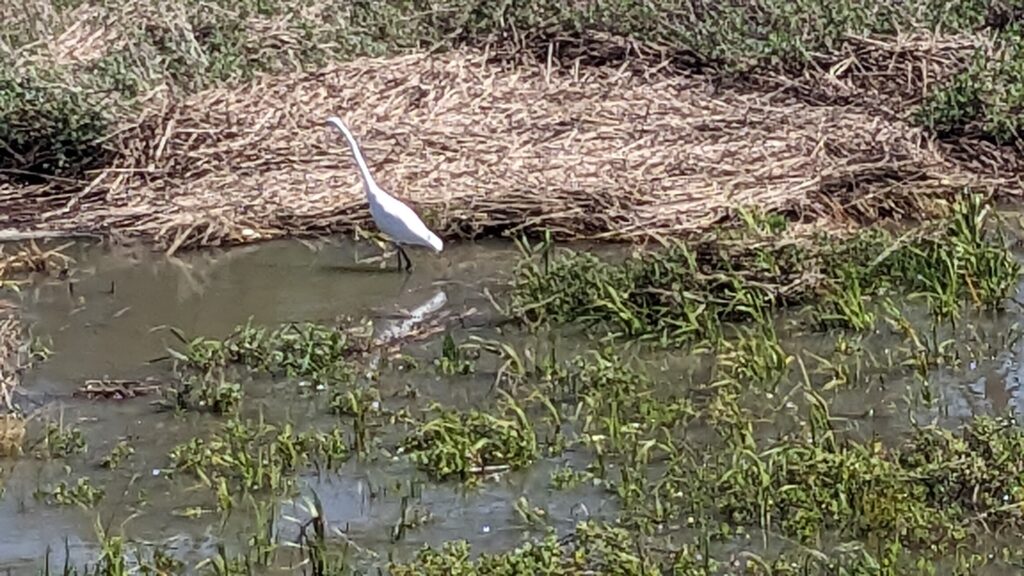
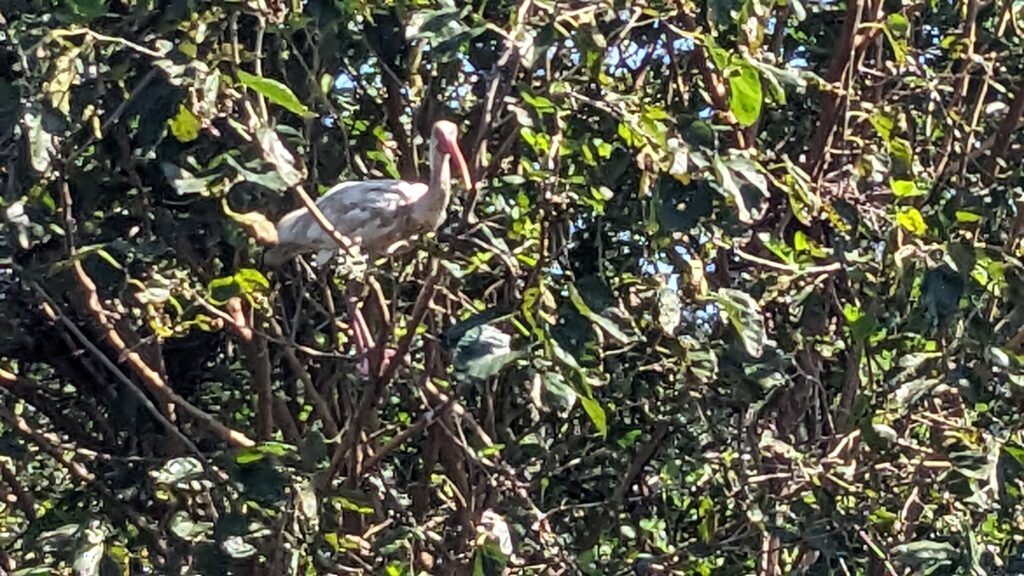

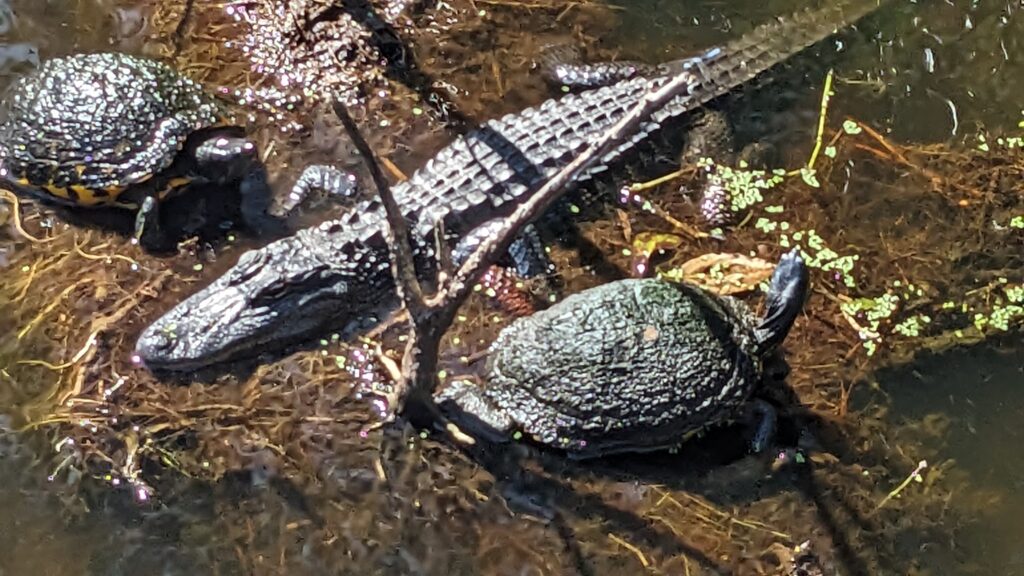

We then drove to Hunting Island, where there is a large state park. They had a nice ranger station with exhibits, including a history of the parks in South Carolina. Their first state parks were built by the CCC during the depression. They built 16 parks, only 6 of which allowed black people to enter, and all of the campgrounds and beaches there were segregated until 1967. When the courts said that they had to integrate their parks in 1963 they just closed them for everyone rather than bother to integrate. (And, as a reminder to our Northern selves, Boston went totally bat-shit in 1974 when their public schools were forced to integrate).
There were a lot of trails in the park. We started on one after lathering up with insect repellent. However the South Carolina version of the mosquito can sting through fabric, so we made a hasty retreat to the car and headed into Beaufort.
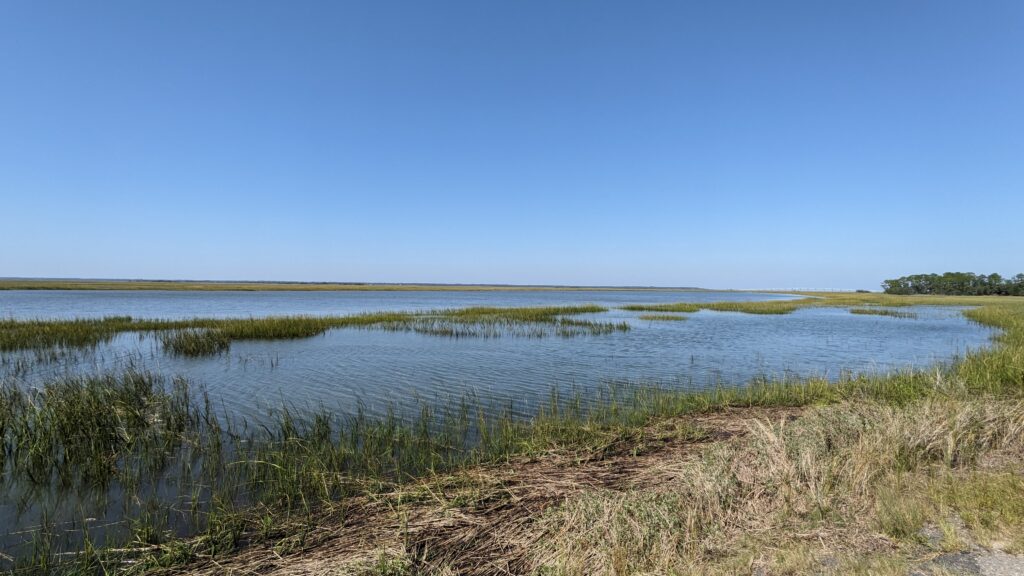
Our AirBnB is just around the corner from the depot trailhead of the Spanish Moss Trail.
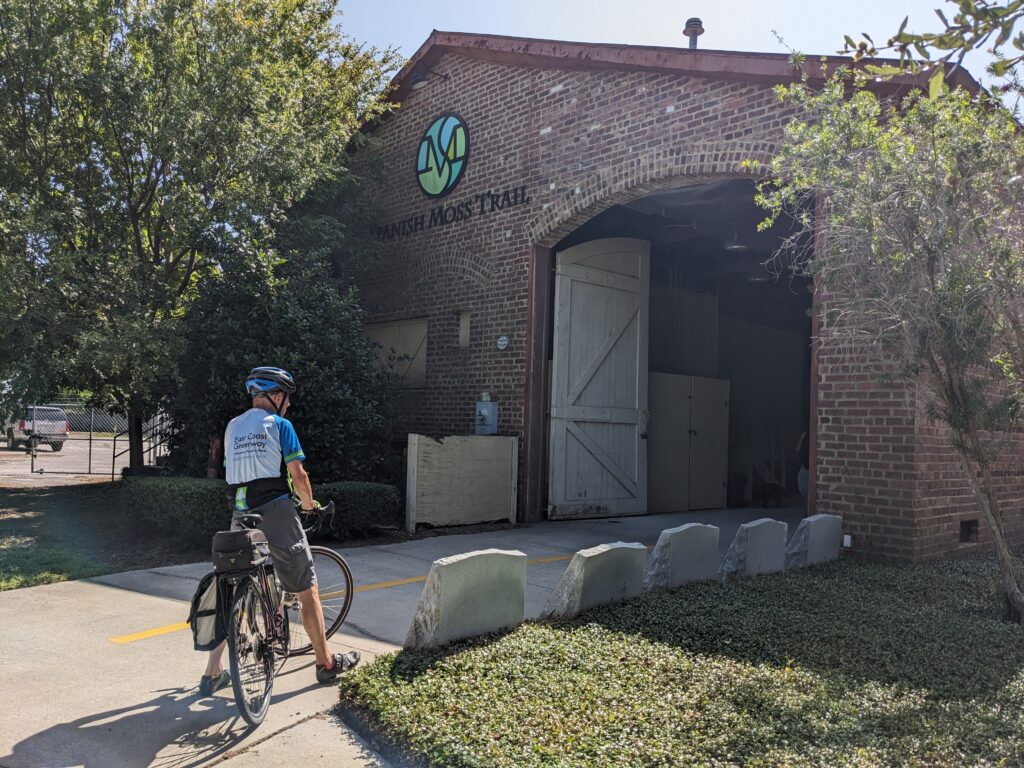
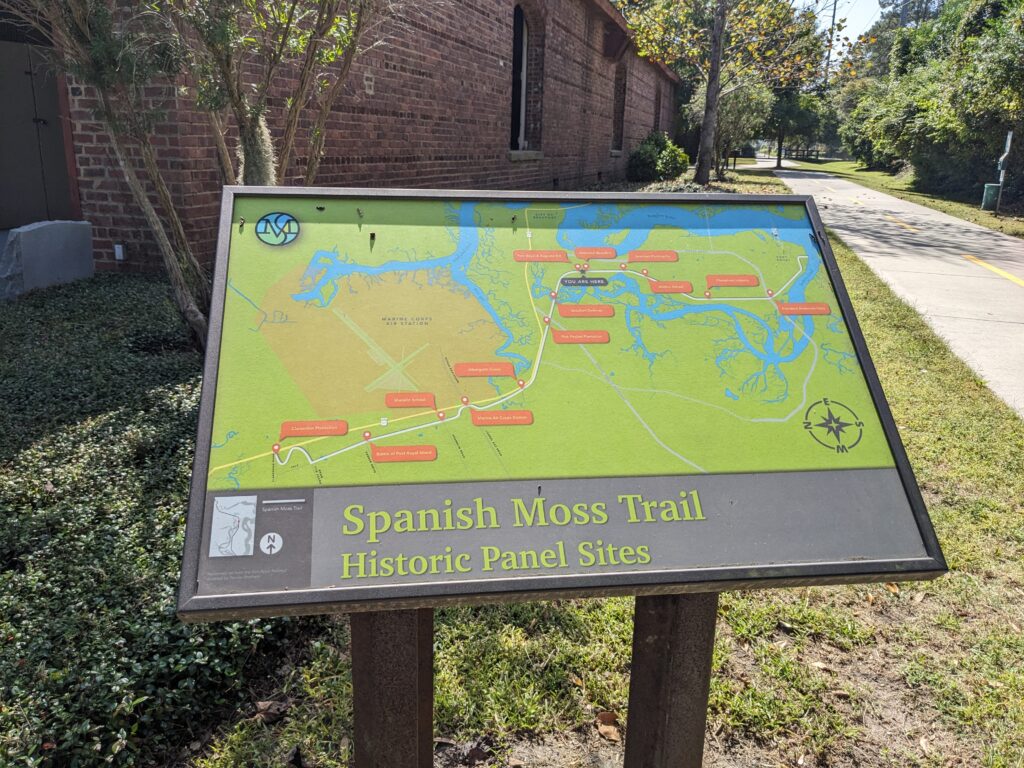
We biked to the end of the trail in both directions (20 miles altogether). There were some beautiful views along the route, and several of the bridges had people fishing off of them.

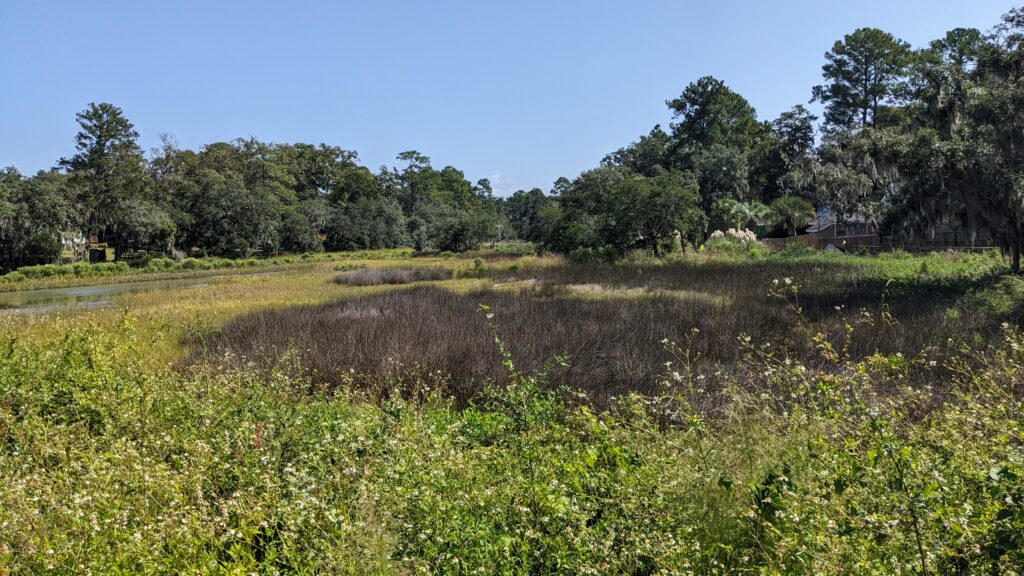

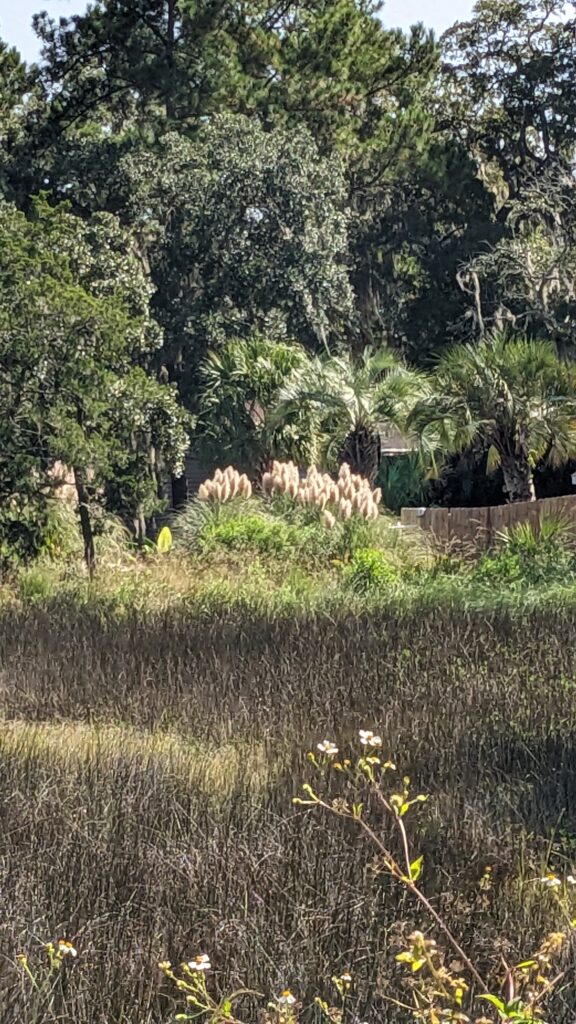
The western end of the trail abuts a Marine Air Base. Tomorrow is a graduation weekend at Parris Island – the Marine boot camp. We met a family at the Cypress Wetlands yesterday who are in town for their son’s graduation. They said that on Thursday (today) there would be the last march before the graduation exercises on Friday. We assume that that is what was going on this morning because there were a LOT of planes taking off and flying very low around the air base. I can’t imagine that the neighbors would put up with that much noise on a frequent basis.
